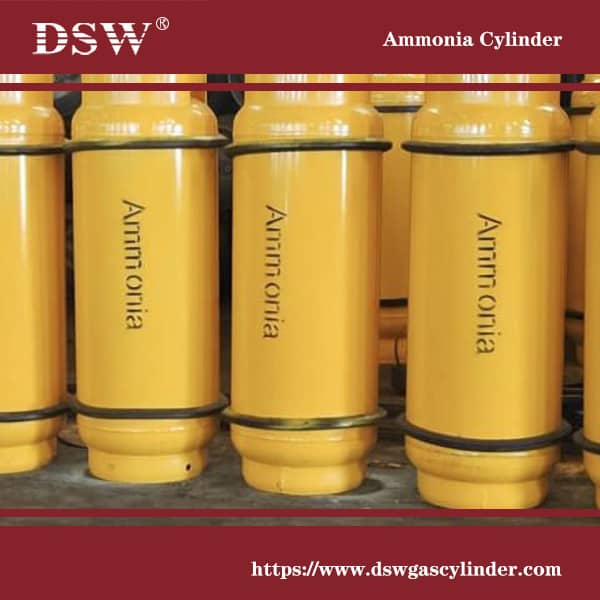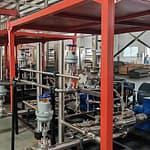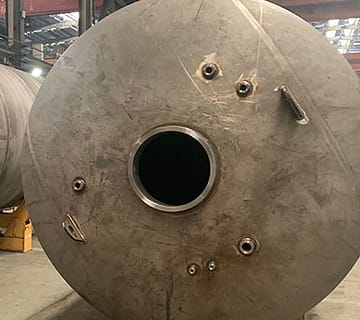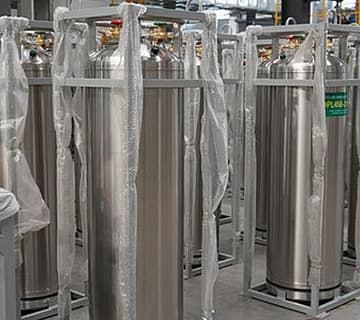Ammonia
Ammonia GAS CAS No. 7664-41-7
Ammonia, a colorless and poisonous gas with an unpleasant odor, occurs naturally throughout nature primarily due to anaerobic decay of plant and animal matter but has even been detected in outer space.
Ammonia (NH3) can be found everywhere, from air, soil, and water to plants and animals – including humans – in plants and environments. Furthermore, ammonia is present in numerous household and industrial cleaners around the home or workplace.
Ammonia,liquid ammonia

Properties of NH3
Ammonia is a colorless gas with an unpleasant pungent odor, lighter than air, with its density being only 0.589 times that of air. Liquefaction occurs quickly due to strong hydrogen bonding between molecules; gaseous ammonia turns to liquid at temperatures as low as -33.1 degC (-27.58 deg F) before freezing out as colorless crystals at -77.7 degC (-107.86 degF). Ammonia’s high electronegativity and significant enthalpy of vaporisation (23.35 kJ/mol) make it a valuable solvent in laboratory settings.
Liquid ammonia
Liquid ammonia exhibits mighty ionizing powers due to its high electronegativity (e of 22). Furthermore, liquid ammonia possesses a highly significant standard enthalpy change of vapourization (23.35) when compared with water’s 40.65 kJ/mol, methane’s 8.19 kJ/mol and phosphine’s 14.6 kJ/mol) making it suitable for laboratory use without additional refrigeration or use in uninsulated vessels without extra insulation – see liquid ammonia as a solvent!

NH3 or NH4 Uses & Benefits
Ammonia in Fertilizer
Ammonia is an essential element in ammonium nitrate fertilizer, providing plant life with crucial nitrogen for healthy development and growth. Farm crops, lawns, and gardens depend on this crucial nutrient source to thrive.
Fertilizer uses up 90% of ammonia produced worldwide and plays an essential role in food production for billions of people across the globe. While food crops naturally deplete soil nutrient supplies, farmers rely on fertilizer to keep their soil productive while also increasing levels of essential elements like zinc, selenium, and boron in food crops.
Ammonia in Industrial/Manufacturing Uses
Ammonia’s thermal absorbent properties allow it to serve as an excellent refrigerant gas and in air conditioning equipment, absorbing significant heat from its surroundings and becoming a perfect heat sink.
Ammonia can be used to purify water supplies and as an ingredient in many manufactured goods such as plastics, explosives, fabrics, pesticides, and dyes.
Ammonia can also be found in waste and wastewater treatment, cold storage, rubber, pulp and paper, and food and beverage industries as a stabilizer, neutralizer, and nitrogen source. Furthermore, its application also plays an integral part in pharmaceutical manufacturing processes.
Ammonia in Household Cleaning
Ammonium hydroxide, commonly called household ammonia, is used in various household cleaning products to clean tubs, sinks, toilets, countertops, and tiles. Ammonia is effective at breaking down grime or stains caused by animal fats or vegetable oils like cooking grease and wine spillage. It is also often included as part of glass cleaner solutions to avoid streaking issues.
What is the method of production of ammonia?
Ammonia can be produced commercially using the Haber process, which involves reacting one nitrogen molecule with three hydrogen molecules over a bed of silver catalyst at high pressures and temperatures to yield maximum ammonia production, generally between 15-20%.
China is the world’s leading producer of ammonia. In 2022, the production of ammonia in the Asian country was estimated at around 42 million metric tons of contained nitrogen.
Ammonia plays an integral role in global agricultural systems through its use as fertilizer.
Ammonia is the cornerstone of all mineral nitrogen fertilizers, acting as a link between atmospheric nitrogen levels and the food we eat.
Roughly 70% of ammonia consumed annually is used as fertilizer, with the remaining portion used in various industrial applications like plastics production or explosives.
While its use as fuel holds promise within clean energy transitions, this field remains relatively young; hence, this roadmap focuses on existing agricultural and industrial services of ammonia.










No comment